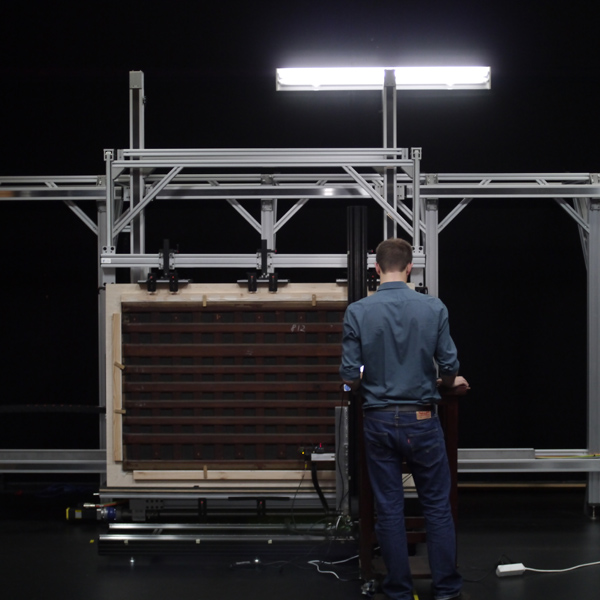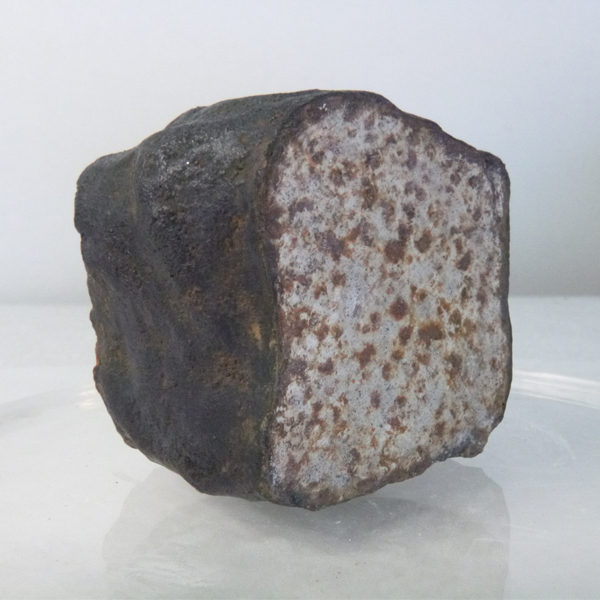
The Lucida 3D Scanner recording the surface of the tapestry © Oscar Parasiego for Factum Foundation
The digital documentation of the tapestry’s surface is an essential step towards understanding its material structure. Over a period of three weeks in March 2022, ARCHiVe carried out the complete documentation of the tapestry’s shape, texture and colour, thanks to a combination of 2D and 3D non-contact scanning technology. The front side was recorded at a spatial resolution of 100 microns (or 10,000 points/cm2), and the colour information of both front and back with a resolution of around 500 dpi at 1:1 scale. This highly detailed information will allow looking at the tapestry’s surface under a new light, unearthing aspects that are usually ignored.
The digitisation of the first historic tapestry from the Giorgio Cini collection required adapting the Lucida 3D Scanner’s structural frame to record large horizontal areas. The Lucida was primarily designed to scan paintings vertically, while they are mounted on an easel or on the wall. The conservation requirements of the Cini tapestry did not allow it to be positioned vertically, so the recording had to be completed with the tapestry lying flat. The Lucida components were re-designed and re-arranged to allow a usable span of 4.5m, enough to accommodate the tapestry’s width. The structure was then adapted to be used for the composite photography recording, varying the capture distance. A specially designed pulley system allowed the photographer to slide the camera (with its mounted flash unit) along the beam from a fixed position.
Thanks to the 3D information it will be possible to generate shaded renders to visualise the topography of the fabric without the colour, so the variations in texture and depth can be better understood, measured and analysed. The relief data was obtained with Factum Foundation’s Lucida 3D Scanner, a system specifically designed for capturing the surface of paintings and other low-relief objects – and part of ARCHiVe’s permanent equipment. The colour information was acquired through composite photography. The layer of the colour will then be registered onto the layer of the relief, in order to create a multi-layered file through which it will be possible to explore this unique surface online, from any device. This will serve to experts, scholars and the general public to appreciate this work of art as never before. The obtained digital data can also be used in the future for an eventual facsimile reproduction, among other applications.
The digitisation of this tapestry is part of the ongoing project of documenting in 3D the whole island of San Giorgio, from the exterior of its buildings to the interiors and objects contained in them. This ambitious, multi-scale project intends to demonstrate the importance of digital documentation as an active tool to preserve Venice’s cultural heritage, and potentially be applied to a global scope.

Carlos Bayod Lucini operating the Lucida 3D Scanner to record the surface of the tapestry © Oscar Parasiego for Factum Foundation

Detail of the Lucida 3D Scanner custom software creating a shaded render of the 3D data © Oscar Parasiego for Factum Foundation













